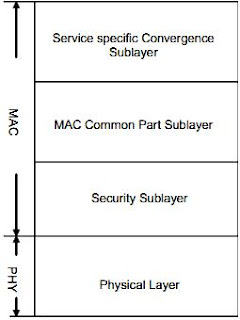The MAC layer of IEEE 802.16 is designed to serve sparsely distributed stations with high data rates, where the SSs are not required to listen to the other stations like the MAC in IEEE 802.11.
The BS schedules the transmissions of the corresponding SSs in advance. The MAC of WiMAX is reservation-based and contention-free. The SSs need to contend only when they access the channel for the first time at the connection admission control stage.
The reservation-based resource allocation allows the WiMAX BS to serve a large number of SSs as well as the guarantee of QoS in the connection level for both uplink and downlink traffic.
Compared with 802.16, Wireless Local Area Networks (WLAN) based on IEEE 802.11 terminals usually have intermittent traffic that contends every time before transmitting, where the efficiency is significantly impaired when more stations enter the network.

The main purpose of the MAC protocol is the sharing of radio channel resources among
multiple accesses of different users. The MAC also contains a separate security sublayer handling authentication, secure key exchange, and encryption.
multiple accesses of different users. The MAC also contains a separate security sublayer handling authentication, secure key exchange, and encryption.
No comments:
Post a Comment